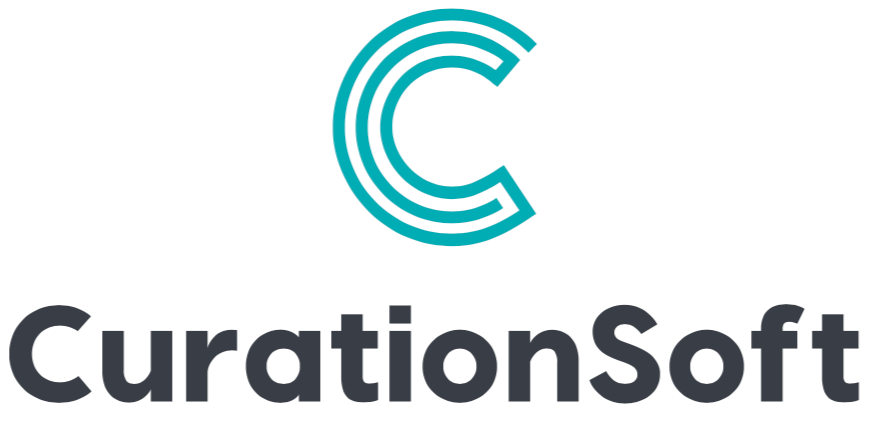The Most Successful Examples Of Content Curation
Content curation is the process of collecting and sharing relevant information from various sources with a target audience. It can be an effective way for marketers to engage their audiences, drive traffic, and create compelling content.
In this article, we’ll discuss top examples of content curation in action with data-backed evidence and specific websites or brands that have implemented it successfully. We’ll also explore best practices for leveraging content curation as part of your overall marketing strategy.

What is Content Curation?
Content curation is the art of searching, selecting, commenting on, and distributing to your audience the best original content already available on a specific subject to meet your users’ needs. It’s important not to confuse Content Curation with Content Aggregation. While aggregation involves collecting links from various sources without adding any value or context, content curation requires actively hunting for quality content and sharing it with your users while providing unique insights or commentary.
Benefits of Content Curation
Saving time and resources
This approach can be extremely beneficial for marketers who are looking to grow their business but don’t have enough time or resources to produce all the necessary content themselves. By leveraging curated content as part of their marketing strategy they can still engage their audience and add value without having to create everything from scratch.
Building trust
In addition, carefully chosen pieces of curated content can help build trust in a brand by demonstrating that you understand what kind of information your customers need and care about.
Staying up-to-date
It also allows you to stay up-to-date with industry trends so that you’re always one step ahead when creating new products or services tailored specifically for them.
Building relationships
When done correctly, content curation can be an incredibly powerful tool in any marketer’s arsenal helping them reach more people faster than ever before while at the same time building relationships with potential customers through meaningful conversations about topics relevant to both parties involved.
Created vs Curated Content
Content marketing is an important part of any successful digital marketing strategy. Whether you’re creating content from scratch or curating existing content, it’s essential to understand the differences between the two approaches and how they can be used together for maximum impact.
Examples of Content Curation
It’s a great way to create engaging content that adds value to your audience while also helping you build relationships with other industry experts.
1. Content Curation for Social Media
Social media platforms are an ideal place for content curation. Brands can share curated content from their blog or website as well as other relevant sources to keep their followers engaged and informed about the latest news and trends in their industry.
Social Media Content Curation Examples
Zara
The fashion brand Zara regularly shares curated images on Instagram, featuring looks created by its customers wearing Zara products. This type of user-generated content (UGC) helps promote customer loyalty and encourages others to purchase items from their store.
Maryann Rizzo
Maryann Rizzo is an interior designer and one of Pinterest’s most followed accounts with over 9 million followers. She has found success by focusing her efforts on curating beautiful images related to interior design that inspire her audience. Her ability to find stunning visuals makes her account stand out from other similar accounts, and she continues to grow in popularity.
Mari Smith
Facebook prefers original content over curated ones, so Mari Smith takes a different approach when sharing someone else’s posts. She always adds her insights and personal touch while creating custom post images with her branding this helps ensure that every post gets plenty of engagement from her followers.
Guy Kawasaki
Guy Kawasaki has 1.4M Twitter followers and he knows how to balance his original content with relevant curated pieces as well. He understands that curating should not be the primary focus on social networks but rather just another element in his overall editorial calendar strategy something which works for him given his large following.
2. Content Curation for Newsletters:
Newsletters are another great platform for curating high-quality content that resonates with subscribers. For instance, MailChimp recently launched a newsletter called “The Daily Chimp” which features stories about small businesses around the world that have used MailChimp’s services successfully. The newsletter has been incredibly successful at increasing engagement among existing users as well as attracting new ones due to its informative yet entertaining approach to storytelling through curated articles and videos related to business growth strategies, marketing tips, etc.
Other Examples Of Newsletter Content Curation:
Launch Ticker
Launch Ticker is a great example of how you can monetize content curation. They provide readers with brief email newsletters that summarize the top stories in tech in three hundred words or less. Members can comment on stories and interact with each other, creating a sense of community. After 12 months, readers are likely invested enough that they’ll pay for continued access – $10 per month (or $100 per year).
Moz Top 10
Moz Top 10 is another example of successful content curation through email newsletters. Every issue lists 10 pieces of SEO-related content from around the web, giving marketers an easy way to stay up-to-date on industry news without having to search for it themselves. This curated newsletter has been running since 2004 and continues to be popular today due to its concise format and useful information provided by Moz’s team of experts.
3. Websites Content Curation Examples
Content curation is also beneficial when it comes to search engine optimization (SEO). By creating original pieces of content based on topics that are trending or popular within your niche market, you can increase your chances of appearing higher up in Google searches related to those topics thus improving visibility and driving more traffic back toward your website or blog over time. Additionally, linking out to reputable websites within your post will help boost credibility amongst readers while simultaneously building relationships with those sites which could potentially lead them to refer more people back towards yours down the line.
BuzzFeed
BuzzFeed is one of the most successful examples of effective content curation on websites. They use curated content from various sources including news sites, social media networks, and other online publications to create entertaining articles that are often shared widely across the web. Their success lies in their ability to find interesting stories that appeal to their target audience while also ensuring they remain up-to-date with current trends and topics.
The Huffington Post
The Huffington Post is another great example of how effective content curation can be used successfully on a website. They have mastered the art of finding interesting stories from around the web and repackaging them into engaging articles for their readership base which consists mainly of millennials who are looking for timely information about what’s happening in the world today.
Mashable
Mashable is yet another example where effective content curation has been implemented successfully on a website platform. Through its “Mashable Recommends” section it provides users with handpicked stories from different sources around the web which are tailored specifically towards tech enthusiasts who want only top-quality news related material at any given time.
Upworthy
Upworthy focuses heavily on using data-driven techniques when selecting its curated pieces so as not just to attract attention but also to ensure maximum engagement levels among its readership base by delivering highly shareable pieces every single day. It does this by carefully researching each piece before publishing it so as not just to make sure it resonates well with its target audience but also to guarantee high click-through rates once published online.
Best Practices for Content Curation
It’s an effective way for marketers to stay organized while providing value to their readers. Here are some best practices for successful content curation:
1. Identify Your Audience
Before you start your content curation efforts, it’s important to identify who your target audience is and what type of information they need from you. This will help ensure that the content you share resonates with them and adds value to their lives in some way.
2. Stay Organized
Content curation requires organization if it’s going to be successful over time. Set up folders on your computer or use a tool like Evernote so that all of your research can be easily accessed when needed without having to search through piles of documents or emails every time you need something new.
3. Share Quality Content Only
Don’t just share any old piece of content; make sure it’s quality material that adds real value for your readership base before posting anything online or sending out an email newsletter about it. You don’t want people unsubscribing because they’re not getting useful information from you.
4 . Be Consistent
To get the most out of your content curation efforts, consistency is key post regularly and stick with topics related specifically to what interests your audience so they know what kind of information they can expect from you each week/month/quarter, etc.
5. Track performance
Track how well certain pieces perform versus others by using analytics tools such as Google Analytics which allows marketers to measure website traffic, conversions, and bounce rates. This data will give insight into which types of posts resonate more with readers than others so adjustments can be made accordingly moving forward to optimize results even further down the line.
Key Takeaway: Content curation is an effective way to provide value to readers. To get the most out of it, identify your audience, stay organized, share quality content only and be consistent and track performance with analytics tools.
FAQs
Conclusion
Content curation is an important part of any successful content marketing strategy. By understanding and looking at examples of how other brands have used it effectively, you can begin to create your content curation plan that will help engage your audience and drive traffic. While there are many best practices for content curation, the most important thing to remember is that quality should always be prioritized over quantity. With careful planning and execution, content curation can be a powerful tool in helping you reach your goals.
Do you want to increase your website traffic and visibility? Content curation is a powerful tool that can help you create compelling content, attract more visitors, boost SEO rankings and improve customer engagement. CurationSoft offers an easy-to-use platform that allows you to quickly discover relevant topics and content sources so that you can effectively manage your online presence with less effort. Try our free trial today and start creating the perfect mix of curated content for maximum impact!






